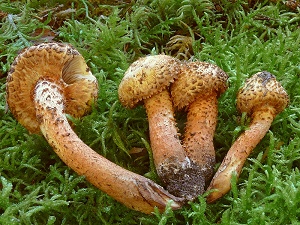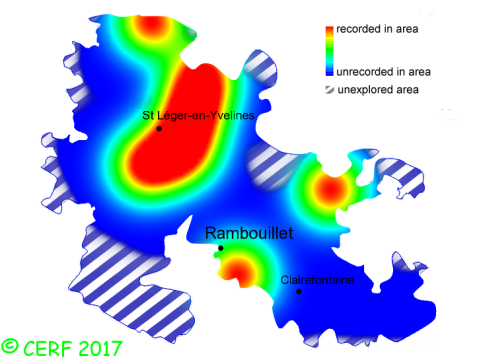| Pholiota squarrosa (Weigel:Fr.) P. Kumm. |
|
|
|
|
|
|
The cap is brown (scales) on a pale yellow background, convex then flattened, with a central umbo; its margin is smooth. The cap surface is scaly, not viscid nor sticky. The stem is yellow, scaly under the ring hanging very high, smooth above, with a sheathing ring. The flesh is pale yellow, brown towards the stem base, unchanging; its taste is mild, faint, of radish; the odour is peppery or of cork; its texture is fibrous. The gills are pale yellow to olive-brown, adnate, crowded . The spore print is rusty brown. This species is parasitic or saprophytic. It grows on wood (dead or not), in tufts, in broad-leaved woods (sometimes with conifers), parks, gardens, on fruit trees : apple trees, cherry trees. The fruiting period takes place from September to November.
Chemical tests : none. Distinctive features : cap surface covered with erect scales; stem banded with scales up to the sheathing ring; cap and stem not viscid; in dense tufts; on stumps or base of tree trunks; faint odour Pholiota squarrosa is quite rare and localised in the forest of Rambouillet, and is frequent, more generally speaking . | ||
|
page updated on 14/01/18

